39th Annual Kotohajime: Hatsu-mato
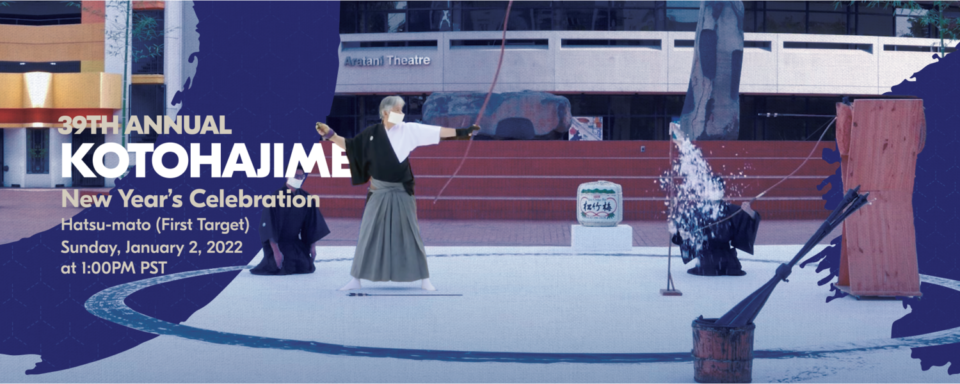
When
Where
Description
In 1983, Hirokazu Kosaka shot the first arrow of “Kotohajime”. The event has grown to become the JACCC’s signature New Year’s celebration.
Join us in this FREE virtual event as we celebrate new beginnings.
Literally meaning “the beginning of things,” Kotohajime will celebrate the Year of the Tiger with the theme Hatsu-mato or “First Target."
Ceremony is the source of all art and music. From time immemorial, humanity has sought to transcend everyday existence, to escape discomfort, and to cope with uncertainty. Sacred music and dance are at the core of this search for spiritual awakening.
The thread of “Hatsu-Mato” (First-Target) guides this year’s Kotohajime. In old Kyoto, Renji (latticework) is used on street-facing windows. The aesthetic of a slightly obscured view gives play to shadows and invokes a sense of possibility for passers-by. Traditional Japanese archery uses the “Kasumi mato” (Hazy target) representing the full moon draped by fleeting clouds. The strict outline of the target is more clearly delineated by a soft edge.
Haze – the blurring of boundaries – invites imagination and exploration.
What will 2022 become?
2022 Kotohajime Program Overview
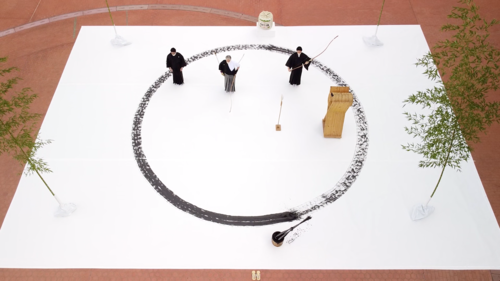
Kyūdo (Archery)
The group is a part of the Los Angeles Kyudo Kai archery founded in 1916 here in Little Tokyo. The archery range was at the present LA police station. In 2022, the group will celebrate their 106thAnniversary. The art of Archery is both sacred and tangible. Dating back to 11th Century, it has been used as an art of purification in ceremonies within the Imperial Court of Japan, Buddhist temples, and shrines. In order to accomplish a perfect shot one must have immediate action without any intervening thoughts. The Los Angeles Kyudo kai regularly meet at the Angeles Gate Dojo in San Pedro.
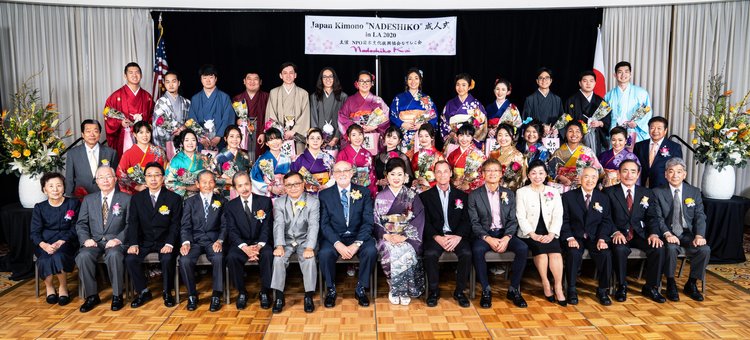
Nadeshikokai Kimono Organization
Nadeshiko-kai, Japanese Culture and Traditions, Inc., is a volunteer-run non-profit organization was established in 2011 to promote and preserve Japanese culture and traditions by Ms. Takako Sasaki.
We strive to honor and serve the communities of culturally diverse groups in the greater Los Angeles area. Our members and volunteers participate in events and perform various functions whose purpose is to promote and transmit Japanese culture, specifically the kimono culture, to the communities as well as to the next generation.
Our organization covers a broad range of activities, such as helping other Japanese organizations and events. We are very proud of our Coming-of-Age Ceremony. It is a long-held tradition in Japan which celebrates everyone who reaches 20 years old.
Our founder, Ms. Sasaki, organized the ceremony in 2013, the first ever held in the Los Angeles area. The ceremony has been held annually since then and the 2022 ceremony will be our 10th anniversary. Due to COVID-19 pandemic, our style of celebration was altered to accommodate the needs and requirements of the community in 2021. However, we are very happy to celebrate the Coming-of-Age ceremony this year in person with limits designed to ensure health and safety. Hopefully we will be able to resume our traditional program soon.
We plan to continue our activities in the area so that many people will be well acquainted with and appreciate the beautiful Japanese culture, especially kimono culture.
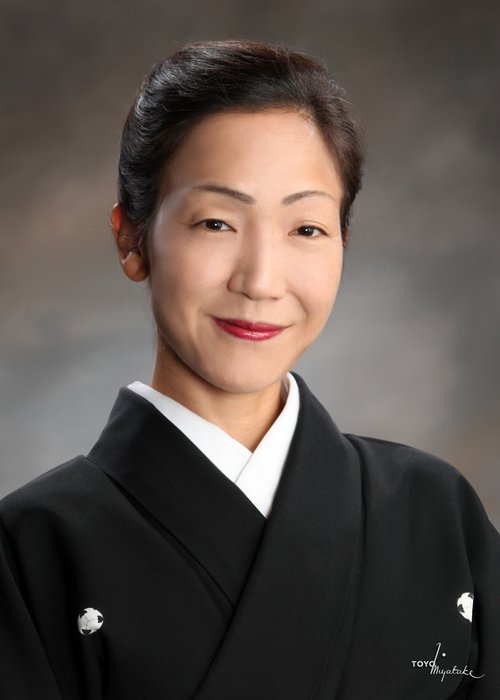
Bando Hidesomi Nihon Buyo
Bando Hidesomi has been teaching in the greater Los Angeles area for 25 years.
She started her training under Madame Bando Mitsuhiro, at the age of three. In 1985, she also started training under Madame Bando Hideko, daughter of Grand Master Bando Mitsugoro IX (9th). She trained under the care of headmaster Bando Mitsugoro IX for 4 years while attending Keio University in Tokyo, Japan. During her 5 years in Japan, she received the title of Shihan (Master’s degree).
Bando Hidesomi and her students have performed at the Monterey Park Cherry Blossom Festival, Bowers Museum, Southcoast Botanical Garden, Awaya-Kai Koto concert, Makoto Taiko Anniversary concerts and many other venues throughout the years. They also share their passion by participating annually in the Nisei Week Festival, obons held at Zenshuji and Sozenji Temple and visiting Keiro nursing homes. In recent years, she has had the privilege of teaching the queen candidates for their Nihon Buyo section in the Nisei Week Coronation Ball.
She is presently teaching at the Pasadena and Gardena JCI and the Mai no Kai studio in Torrance. She was also part of the after school program at El Marino Elementary School for 18 years.
Through Nihon Buyo, Bando Hidesomi wishes to express her feelings of appreciation and respect for all cultures, and hope her passion for Nihon Buyo will bring love, joy, peace and hope to everyone, creating a bridge of unity between all cultures.
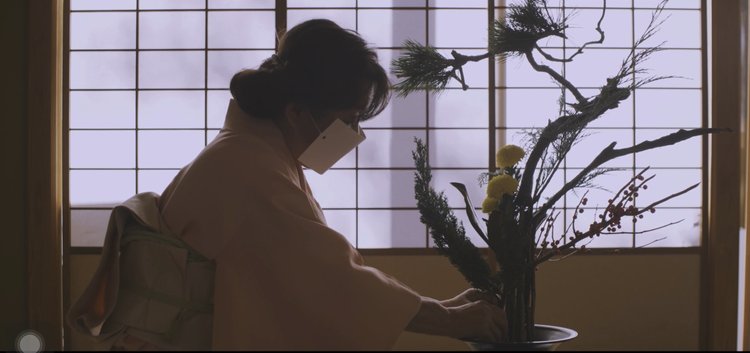
Ikenobo Ikebana Society of Los Angeles Chapter
Izumi Minamitani, president of Ikenobo Ikebana Society of Los Angeles Chapter, will perform the Ikebana for this year's Kotohajime. She is from Kurashiki City, Okayama Prefecture, Japan. She started learning the Hayami of tea ceremony when she was 12 years old, and started learning Ikenobo Ikebana and Sencha tea ceremony Bodaisentouryu when she was 15 years old. She came to Los Angeles in 1994 and started teaching Ikenobo Ikebana in 1998.
The Los Angeles Chapter of Ikenobo Ikebana is one of the largest chapters outside of Japan with over 300 members. The purpose of the chapter is to foster appreciation of Ikenobo Ikebana. They are area teaching classes, giving demonstrations, and holding exhibitions throughout the year. The Ikenobo Los Angeles Chapter was the first overseas branch of Ikenobo and celebrated its 64th anniversary this year.
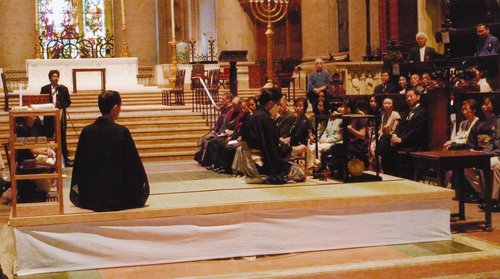
The Omotesenke Domonkai Southern California Branch
The Omotesenke Domonkai Southern California Region, U.S.A. branch was originally started in 1969, with its headquarters in Kyoto, Japan.
Chanoyu, which attained greatness under Rikyu, has been handed down for over 400 years through Omotesenke's Fushin'an. Fushin'an is the name of Rikyu’s tearoom, and it continues to be maintained by successive Iemotos. Fushin’an’s name also refers to the Omotesenke estate and organization, as well as Iemoto Sen Sosa’s residence and name. Through inheritance by the Iemotos, new cultural life is passed through each era.
Omtesenke, through Sen Sosa (Yuyusai) 15th Generation Iemoto (Head Tea Master) the main household to pass on the traditions of Rikyu’s Chanoyu to the world, we aspire to pass on the Japanese beauty and spirit through the art of Chanoyu to future generations. Yuyusai assumed the role as Iemoto upon his father Jimyosai’s retirement in November 2018, and continues his work as Iemoto, not just as a tea practitioner, as he studies various subjects that affect the world.
As a non-profit organization, the Southern California branch aspires to spread the traditions of Chanoyu through dedication and discipline of daily practice by its members. The Southern California branch has currently over 160 members in Southern California, Colorado, Nevada, Texas, among other states and in Canada.